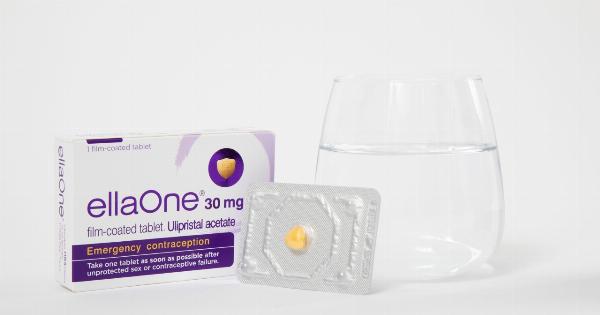When it comes to contraception, there are various options available for individuals to choose from. One popular choice is the spiral, also known as the intrauterine device (IUD).
However, it is important to note that the spiral is not the only contraceptive option available. In this article, we will explore the spiral as well as other contraceptive options, discussing their effectiveness, benefits, and potential side effects.
The Spiral: What You Need to Know
The spiral, or IUD, is a small T-shaped device that is inserted into the uterus to prevent pregnancy. There are two types of spirals: hormonal and non-hormonal.
Hormonal spirals release progestin into the uterus, which thickens the cervical mucus and thins the uterine lining, making it difficult for sperm to reach and fertilize an egg. Non-hormonal spirals do not contain any hormones and work by creating a hostile environment for sperm.
Advantages of the spiral include its long-term effectiveness (up to 99% in preventing pregnancy), convenience (once inserted, it can last for several years), and reversibility (fertility returns quickly after removal).
It does not interrupt sexual activity or require daily maintenance.
However, there are potential side effects associated with the spiral. These may include cramping, spotting, changes in menstrual bleeding patterns, and, in rare cases, perforation of the uterus during insertion.
It is important to consult with a healthcare provider to determine if the spiral is the right contraceptive option for you.
Other Contraceptive Options
While the spiral is a widely used contraceptive option, there are several other methods available:.
1. Birth Control Pills
Birth control pills contain synthetic hormones that prevent ovulation and thicken cervical mucus. They are taken orally on a daily basis and are highly effective when used correctly.
However, these pills must be taken at the same time every day to maintain effectiveness.
2. Condoms
Condoms are barrier methods that prevent pregnancy by blocking sperm from reaching the egg. They are easily accessible, affordable, and also offer protection against sexually transmitted infections (STIs).
Condoms need to be used consistently and correctly to be effective.
3. Hormonal Injections
Hormonal injections, such as Depo-Provera, are administered every three months and contain progestin. They are highly effective in preventing pregnancy, but they do not protect against STIs.
Some individuals may experience side effects such as weight gain, irregular bleeding, or a delay in the return of fertility after stopping the injections.
4. Implants
Implants are small, flexible rods inserted under the skin of the upper arm. They release hormones that prevent ovulation and thicken cervical mucus. Implants can last up to three years and are highly effective.
Some individuals may experience side effects such as irregular bleeding or changes in menstrual patterns.
5. Diaphragms and Cervical Caps
Diaphragms and cervical caps are barrier methods that block sperm from entering the uterus. They need to be used with spermicide and require proper fitting by a healthcare provider.
These methods offer protection against pregnancy, but they do not protect against STIs.
6. Sterilization
Sterilization is a permanent contraceptive option for individuals who do not wish to have children in the future. It involves surgical procedures, such as tubal ligation for women or vasectomy for men.
Sterilization methods are highly effective but are meant to be permanent, so careful consideration is necessary.
Choosing the Right Option
When choosing a contraceptive method, it is essential to consider various factors, including effectiveness, convenience, potential side effects, and personal preferences.
What works for one individual may not work for another, so it is important to consult with a healthcare provider to find the best fit.
No contraceptive method is 100% effective, and each option has its advantages and disadvantages. It is essential to use contraceptives consistently and correctly to maximize their effectiveness in preventing unintended pregnancies.
Conclusion
The spiral, or IUD, is a highly effective and convenient contraceptive option, but it is not the only choice available.
There are various contraceptive options, such as birth control pills, condoms, hormonal injections, implants, diaphragms, cervical caps, and sterilization, each with its own advantages and considerations. Consulting with a healthcare provider is crucial when making decisions about contraception, as they can provide personalized recommendations based on individual needs and circumstances.




























